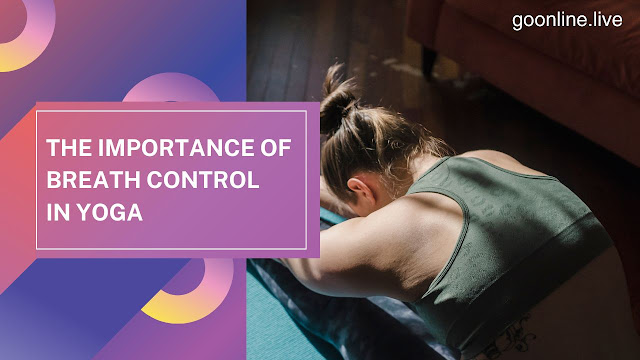
Explore the profound significance of breath control in yoga practice. Discover how mastering the art of conscious breathing enhances physical, mental, and spiritual well-being.
The Importance of Breath Control in Yoga
Yoga isn't only about moving your body; it's a complete approach that nourishes your body, mind, and soul. At the core of this ancient discipline lies the art of breath control, known as Pranayama. The importance of breath control in yoga cannot be overstated, as it serves as a bridge between the physical and spiritual aspects of the practice. By mastering the breath, practitioners can unlock a myriad of benefits that extend far beyond the yoga mat.
The Power of Pranayama:
In Sanskrit, "Prana" means life force or vital energy, while "Yama" translates to control or restraint. Pranayama, therefore, refers to the conscious control and regulation of breath. In yoga philosophy, it is believed that prana flows through the body via energy channels known as nadis. By manipulating the breath, practitioners can influence the flow of prana, thereby balancing the body's subtle energies.
Physical Benefits:
Breath control plays a crucial role in the physical aspect of yoga practice. Proper breathing techniques oxygenate the blood, improve circulation, and enhance the efficiency of the respiratory system. Deep, diaphragmatic breathing increases lung capacity and strengthens the respiratory muscles, promoting overall lung health. Additionally, synchronized breathing with movement fosters greater body awareness and alignment, reducing the risk of injury during asana practice.
Mental Clarity and Focus:
Beyond its physical benefits, breath control is instrumental in cultivating mental clarity and focus. The rhythmic nature of conscious breathing calms the mind, alleviates stress, and induces a state of relaxation. Through mindful breathing, practitioners learn to quiet the incessant chatter of the mind, fostering inner peace and tranquility. This heightened awareness allows individuals to remain present in the moment, enhancing concentration and cognitive function both on and off the mat.
Emotional Regulation:
The breath serves as a powerful tool for emotional regulation, offering a means to navigate the complexities of the human experience. In times of stress or turmoil, returning to the breath can provide a sense of grounding and stability. By cultivating a steady and even breath, individuals can temper strong emotions such as anxiety, anger, or fear. Moreover, Pranayama techniques such as alternate nostril breathing (Nadi Shodhana) can help balance the nervous system, promoting emotional equilibrium and resilience.
Spiritual Connection:
In the realm of spirituality, breath control holds profound significance as a vehicle for self-discovery and transcendence. Many ancient yogic texts describe prana as the bridge between the physical body and the subtle realms of consciousness. Through dedicated Pranayama practice, practitioners can access altered states of awareness, leading to profound spiritual insights and experiences. Breath becomes a sacred act, a communion with the divine essence that resides within each individual.
Conclusion for The Importance of Breath Control in Yoga
The importance of breath control in yoga cannot be overstated. As the very essence of life, breath serves as a gateway to physical vitality, mental clarity, emotional balance, and spiritual awakening. By harnessing the power of conscious breathing, practitioners can unlock the full potential of their yoga practice, cultivating harmony and wholeness on all levels of being. As you journey on the path of yoga, remember to honor the breath as your most faithful guide, leading you ever closer to the radiant heart of the Self.




.jpg)
.jpg)
.jpg)


.jpg)
.jpg)
.jpg)
